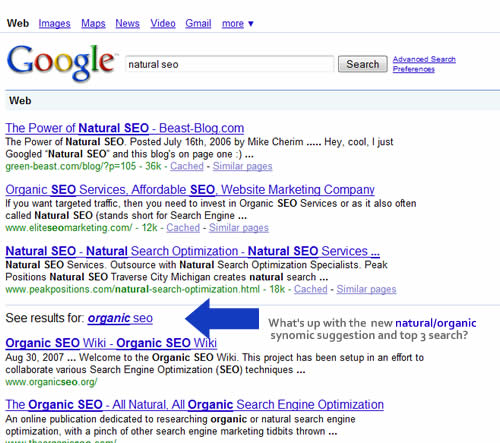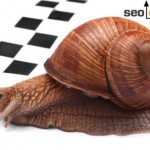What’s the difference between a new website and a powerhouse domain ranking for competitive keyword-specific rankings? The answer, SEO, content, time and links…

Start Your New Website Using These 3 SEO Tips
First, you start with keyword research, this includes assessing all of the root phrases, synonyms, keyword modifiers and potential keyword variations a consumer in search of a solution might use when searching for the product or service type. After you sift through and pick your primary selection, the next step is to start creating content.
Content
When selecting your content, you should concern yourself with two things, the first is the primary keywords and landing pages and the second is the supporting keywords and content pages needed to tip the scale in your favor.
For every competitive keyword ranking in search engines, it takes either dozens to hundreds of overlapping pages or shingles (groups of words on other pages) which all link to a consolidated, primary landing page or strong themed links from websites with trust, authority or that are ranking in that market or niche. Once you have settled on your primary and secondary keywords, it’s time to selectively craft your content for maximum relevance which is the cornerstone of ROI.
Each page should have one topic and not deviate from that topic. The reason is, as the page gains strength over time, it will have the ability to rank for its designated purpose, if the page is not themed properly and does not have a place in the site architecture, it may eventually go supplemental or eclipse another page (essentially fighting for relevance) as a result of not owning a specific function.
We prefer using WordPress as the /%category%/%postname%/ setting in the permalinks option is a great starting point when coupled with intelligent use of category names and post/permalink titles. In other words, you can break out your categories and posts in a succinct tiered fashion that allows you to elect a champion page for your selected keywords while preserving the parent/child relationship to landing pages and supporting semantically relevant content.
Timing
After you add your content and scale the relevance model, you will need to (a) let the pages age gracefully or (b) augment them with off page ranking factor (backlinks) from other sites. Never neglect the internal link equity a site can develop over time (your own website can be its own best source for perpetual and dynamic ranking factor as a result of adding more content, re-purposing aged pages (once they develop PageRank, trust or authority) to augment and rank other internal pages.
Links
Next, you will need to add links in order to give the website sufficient peer review (the head nod from other sites online) that validate the on page claims and reinforce the relevance model of the content. This is known as theme mirroring, whereby a site getting a relevant link from a relevant site (from the same genre or market) has the ability to pass along through a process of osmosis a vote for the new page or website it links to.
This is a fundamental process that is based on the link graph, the link graph is the skeleton of the web in which all link, website/webpage relationships are built on. Consider it the wires that connect the pages and websites online.
As a result of the current (link-flow) moving through these relationships, the target pages house and pass along current to other pages in the site or other sites online. As a result, they gain a foothold as a hub site (a site that is a destination or send traffic to other sites) as the site evolves through the culmination of the three aggregate factors mentioned above (content, time and links).
The end result is:
- Internal pages appear in the SERPs (search engine result pages).
- The website starts to rank for keyword variations (based on the internal on page content).
- The rankings become more buoyant over time (based on the strength and citation of those pages).
This budding of website authority is the ultimate objective for any organic search engine optimization campaign or endeavor. The amount of content, time or links required to breach the top 10 results for the collective array of keywords (starting from the long-tail less competitive keywords to the mid-tail commercial queries and eventually the root phase) are all dependent on the barrier to entry, competition and the thoroughness of your site architecture, quality of content and power of the internal and external links.
As simple as this may sound, this is the crux of SEO as we know it. The difficult part for most is knowing what to do and when for maximum results without jeopardizing long-term benefits for short-term gains.
That is where expertise separates SEO professionals from SEO amateurs when it comes to ROI and properly initiating and executing a proper search engine optimization campaign.











Nice Posts.We enjoy receiving some tips from your posts. It easy to understand even newbies.
well,this seems informative, and thank you.
Do you mind if I quote a couple of your posts as long as I provide credit and sources back to your site?
My blog site is in the very same niche as yours and my users would truly benefit from a lot of the
information you provide here. Please let me know if this alright with you.
Thanks a lot!
Feel free to quote as you like. Thanks
Jeffrey